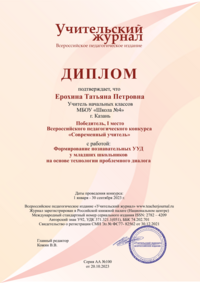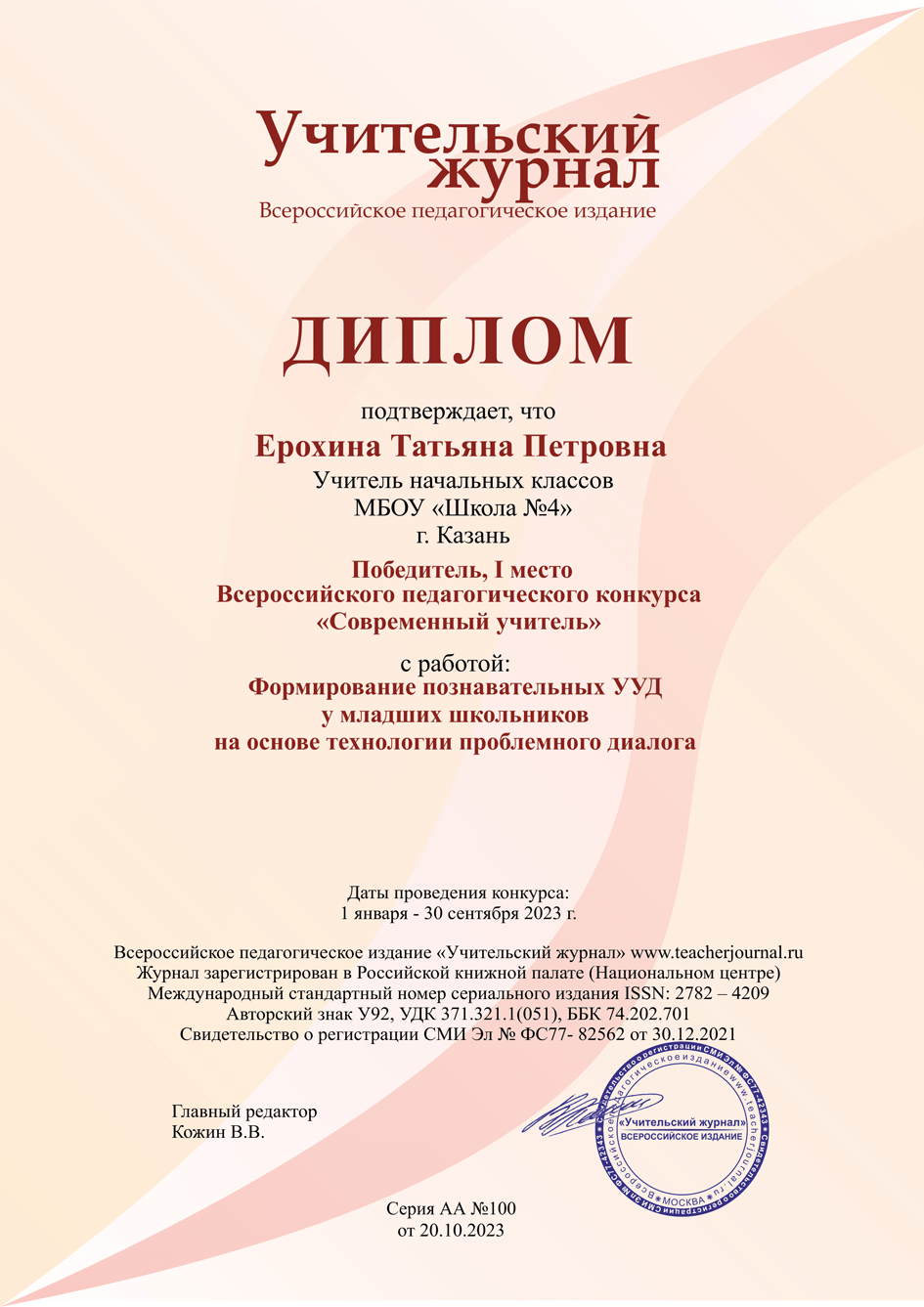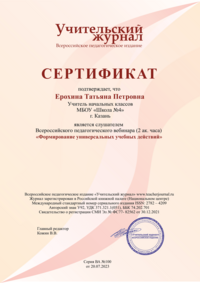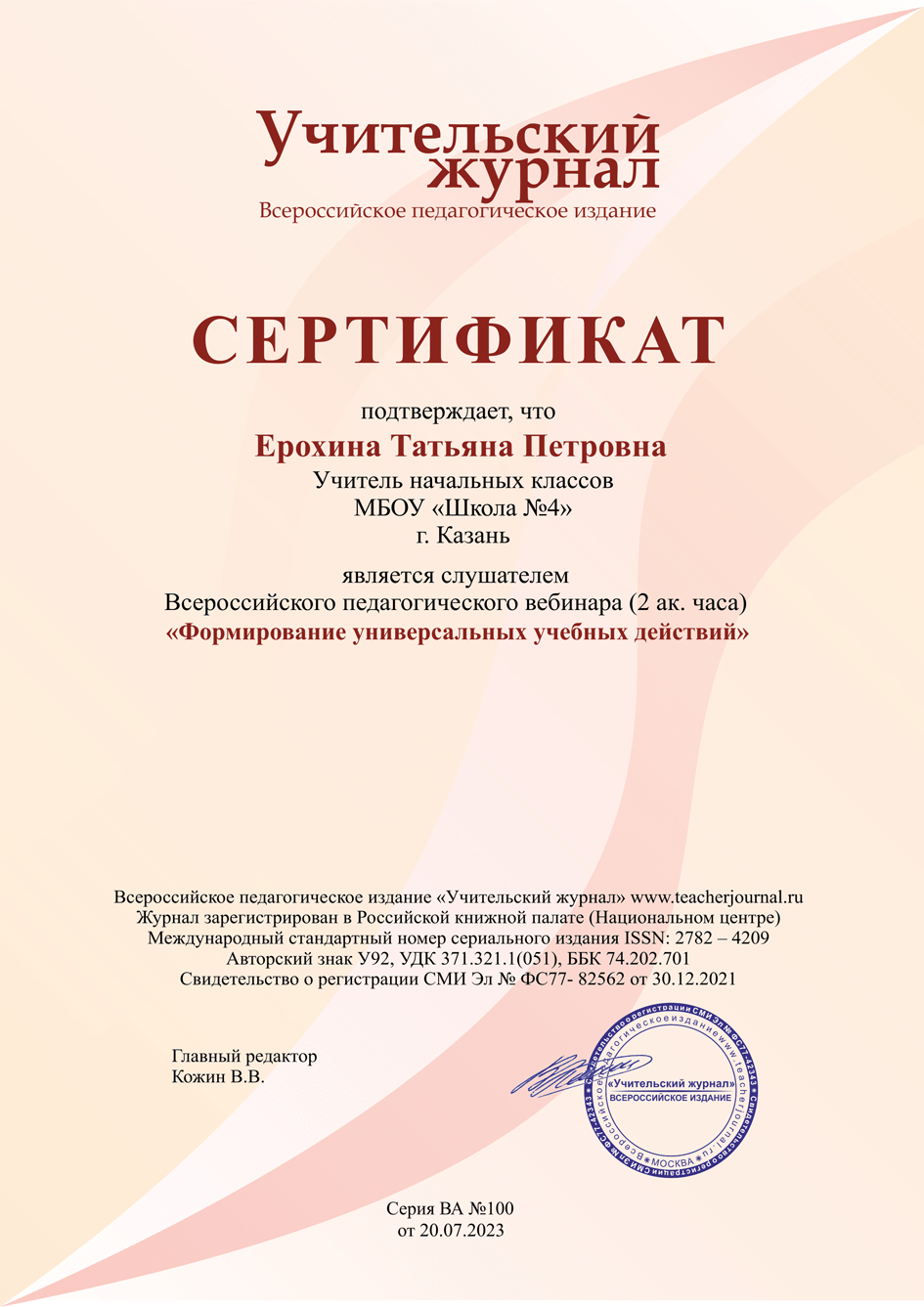Проект «Традиционная английская кухня: от классических блюд прошлого до современных вкусов»
Автор: Чиркова Ольга Дмитриевна
Организация: ГБОУ Школа 962
Населенный пункт: г. Москва
|
“Traditional English Food: From Classic Dishes of the Past to Modern Tastes” |
||||
|
Carried out by: |
|
|
|
|
|
7thform students |
|
|
|
|
|
Supervised by: O. D. Chirkova, teacher of English |
|
|||
Introduction
England is a country with a rich history, unique traditions, and special cuisine. But do you know that English food has its own interesting history? For example, we have recently learned that a dish with eggs, bacon, and beans is a classic English breakfast! This surprised us and made us wonder:
-
How has English food changed from the past to today?
-
Was food healthier in the past or is it healthier today?
-
What do our classmates know about traditional English food and healthy eating?
Relevance of the Topic
This research is important because it helps us understand how cultural traditions can be adapted to modern health needs.
-
From Tradition to Modernity
Learning about English food helps us see how it has changed over time
-
Preserve culture:
Food is a part of culture. We can keep traditions alive by making traditional dishes healthier and more suitable for today’s lifestyle.
-
What do our classmates know?
We want to find out what our classmates know about English cuisine and healthy eating.
Hypothesis
We think that today’s English food is healthier than it was in the past because:
-
People have better ways to store food.
-
They can get foods from all over the world.
-
They know more about eating balanced meals.
Goals of the Work
-
To explore how English food has changed from the Middle Ages to today.
-
To learn how to cook healthy meals based on traditional recipes.
Research Tasks
-
Explore the history of English cuisine by analyzing key aspects: food availability, diet diversity, storage quality, health impacts, and social factors.
-
Compare traditional and modern eating habits in England.
-
Create a healthier version of a classic English breakfast.
-
Survey classmates to check their knowledge about healthy eating and English cuisine.
Research Methods:
-
Studying books and online resources about the history of English cuisine.
-
Studying online researches about healthy eating.
-
Analyzing and comparing past and modern eating habits.
-
Preparing a healthier version of a traditional English breakfast.
-
Asking classmates about English food and healthy eating through a Google Forms survey.
Practical Significance of the Work:
-
The results will help us learn more about English food and healthy eating.
-
We will improve our skills in cooking healthy meals.
-
We will share knowledge about English cuisine and healthy eating with others.
Chapter 1: Theory Section
The History of English Cuisine
English cuisine has evolved significantly through the centuries. To understand how much eating habits have changed since the 13th-18th centuries, focus on these 5 key aspects:
-
food availability
-
diet diversity
-
storage quality
-
health impact
-
social factors
Food availability
Past:
In winter the choice of fresh products was extremely limited. People mostly relied on locally grown foods. They stored vegetables and fruits such as onions, garlic, carrots, turnips, apples, pears and so on in cellars. Additionally, people consumed preserved foods like salted fish, pickled cabbage, and dried fruits.
Present:
Nowadays thanks to better transportation and storage technology, people can buy and keep foods from all over the world any time of the year. For example, even in winter, they can find exotic fruits like mangoes, avocados, or kiwis in stores.
Diet variety
Past:
In winter, diets were limited. Poor people ate simple foods like rye bread, oatmeal, and cabbage soup. As for meat, it was very expensive. Only rich people could afford to eat a lot of meat.
In summer, people in England had more variety in their food. The rich and the poor could eat fresh fish because there was a lot of it from the sea. Another popular food was black pudding — a traditional sausage made from animal blood, oats, and spices.
Present:
Globalization has made English cuisine even more diverse. It now combines traditional dishes with influences from other cultures. For example:
-
Fish and chips (fried fish and fries).
-
Chicken tikka masala (Indian-inspired curry).
-
Shepherd’s pie (meat with mashed potatoes).
-
Roast beef (oven-cooked beef).
Storage quality
Past:
In the past, food storage was much harder. People used traditional techniques like salting, smoking, and drying to make food last longer. But even with these methods, winter diets were often repetitive and limited.
Present:
Today, technology has solved many problems with storing food. Refrigerators, freezers, and vacuum packaging keep food fresh and save its nutritional value for a long time.
Health impact
Past:
Long ago, people’s diets were full of calories but not balanced. They ate a lot of meat, like beef, pork, and hunted animals. In winter, people had very little access to fresh fruits and vegetables. Before refrigerators were invented, people had to salt, smoke, or dry food to keep it from spoiling. This meant they ate a lot of salty foods, like dried meat, pickled fish, or cured sausages. These habits caused health problems like obesity, scurvy and heart disease.
Present:
Nowadays, people can afford to include various fruits and vegetables in their diet. Moreover, they can choose balanced diets and healthier options. For instance, instead of fried foods, many prefer grilled or steamed dishes:
-
Grilled salmon salad
-
Tuna sandwich with avocado
-
Roast beef with vegetables and porridge
-
Modern English breakfast
Social Aspects
Past:
In the past, people’s diets depended on their social class. Poor people mostly ate simple foods like rye bread, oatmeal, and cabbage soup. Meat was rare and expensive, so it was a luxury for them. Rich people, however, could afford to eat a variety of foods, including different types of meat, fish, and sweets.
Present:
Today in England, people of all income levels can easily buy fresh and healthy food. This is possible thanks to global trade and different cultures sharing their traditional foods.
Chapter 2: Practical Section
A Method for Evaluating Nutrition in the Past and Present
We created a system to compare how people ate in the past and now. There are five criteria.
-
Food availability
-
Diet diversity
-
Storage quality
-
Health impact
-
Social aspects
Each criterion is scored from 1 (very bad) to 5 (excellent).
-
1 point: very poor
-
2 points: poor
-
3 points: satisfactory
-
4 points: good
-
5 points: excellent
Food Аavailability
Past:
Foods depended on seasons and location.
Score: 2 points
Present:
Global trade and technology provide year-round access to food.
Score: 5 points
Diet Diversity
Past:
In the past, people ate foods based on their social class and the season.
Score: 3 points (limited for most).
Present:
People have varied diets.
Score: 4 points
Storage Quality
Past:
In the past, food preservation in England relied on traditional methods
Score :2
Present:
Modern storage methods keep food fresh, safe, for longer periods.
Score: 5 points
Health Impact
Past:
An unbalanced diet led to health problems.
Score: 1–2 points
Present:
More balanced and accessible food.
Score: 4 points
Social Aspects
Past:
Food reflected social status: rich people ate varied dishes, while poor people ate simple meals.
Score: 2 points (big social divide)
Present:
Equal access to food
Score: 4 points
Table 1 compares diet quality in England between the 13th–17th centuries and the present day.
Table . Evaluation criteria table
|
Criteria |
Past (XIII–XVIII centuries) |
Present |
|
Food availability |
2 |
5 |
|
Diet diversity |
3 |
5 |
|
Storage quality |
2 |
5 |
|
Health impact |
2 |
4 |
|
Social aspects |
2 |
4 |
|
Total score |
11 |
23 |
Based on the information provided in the Table 1 we can say that:
-
Food availability improved from 2 to 5 points due to better transport and storage technologies.
-
Diet diversity increased from 3 to 5 points nowadays because people got foods from different countries and regions.
-
Storage quality rose from 2 to 5 points thanks to refrigerators, freezing, and preservation methods.
-
Health impact improved from 2 to 4 points because now people know more about good food and how to eat healthier.
-
Social aspects improved from 2 to 4 points. This happened because social inequality decreased, and more people now can afford good food.
Conclusion
The total score shows clear progress: 11 points in the past and 23 points today. This demonstrates how much food quality has improved.
Diagram . Comparison of key criteria
The diagram 1 shows the significant improvements in all criteria between the past and the present.
Conclusion.
Based on the data presented, we can conclude that food quality has greatly improved nowadays.
Adapting The Traditional English Breakfast
In our project, we modified the traditional English breakfast to fit modern health standards.
Note: The recipes for the English breakfast are in Appendix 1.
Changes Made:
Bacon: Replaced fried bacon with baked bacon to reduce unhealthy fats.
Bread: Used whole-grain bread instead of white bread to add fiber.
Vegetables: Added fresh vegetables (like tomatoes and mushrooms) for more vitamins and minerals.
Black Pudding: Removed this dish to lower salt and fat intake.
Result:
The adapted breakfast is nutritious and healthy. Photos and videos of the dish are included in the presentation.
Comparison Of English Breakfast: Past And Present
We created a method to evaluate breakfasts based on 6 key health factors:
-
Calories content
-
Fiber content
-
Vitamins content
-
Protein content
-
Fats continent
-
Carbohydrates content
Evaluation scale:
-
1 point: very poor
-
2 points: poor
-
3 points: satisfactory (average)
-
4 points: good
-
5 points: excellent
1. Calories content
Note: Calorie calculations are in Appendix 2.
Past:
-
Very high (770 kcal) due to fried foods and white bread.
-
Suitable only for physically active people
Score: 2/5 (poor).
Present:
-
Very high in calories due to the large amount of fried foods and white bread. Contains about 690 kcal.
-
Only suitable for those who burn a lot of energy (physically active people)
Score: 4/5 (good).
2. Fiber content
Past:
-
Low fiber (white bread, no veggies).
-
It caused digestive problems.
Score: 2/5 (poor).
Present:
High fiber from whole-grain bread, veggies, and greens.
Helps digestion and keeps healthy blood sugar
Score: 5/5 (excellent).
3. Vitamins content
Past:
-
Almost no vitamins (no fresh ingredients).
-
Risk of scurvy (Not enough vitamin C).
Score: 2/5 (poor).
Present:
-
rich in vitamins from fresh vegetables, herbs, and whole grains
Score: 5/5 (excellent).
4. Protein content
Past:
-
a lot of protein (30%) from beans, eggs, and black pudding
Score: 4/5 (good).
Present:
-
Rich in protein (40%) from mushrooms, eggs.
-
Protein help maintain strength and immunity
Score: 5/5 (excellent)
-
Fats content
Past:
-
high fat levels
-
trans fats
risk of heart diseases.
Score: 2/5 (poor).
Present:
-
Reduced unhealthy fats by avoiding frying.
-
healthy fats (eggs).
Score: 4/5 (good).
-
Carbohydrates content
Past:
-
High in simple carbs (white bread, fried foods).
-
It could cause blood sugar spikes and health risks.
Score: 2/5 (poor).
Present:
The dish contains complex carbs (whole-grain bread, fresh veggies).
It provides long-lasting fullness and steady energy.
Score: 5/5 (excellent).
Table . Comparison Of Nutrition Evaluation Criteria: Past And Modernity
|
Criteria |
Past (traditional breakfast) |
Present (Adapted braakfast) |
|
Calories |
2 |
4 |
|
Fibers |
2 |
5 |
|
Vitamins |
2 |
5 |
|
Proteins |
4 |
5 |
|
Fats |
2 |
4 |
|
Carbohydrates |
2 |
5 |
|
Total points (health benefits) |
14 |
28 |
According to the Table 2 data, the traditional English breakfast gets 14 points. The adapted version gets 28 points (twice as many). Based on this, we conclude that the modern breakfast is healthier, than traditional one.
Diagram . Comparison Of Nutrition Evaluation Criteria: Past And Present
The diagram 2 clearly shows that the adapted breakfast has higher scores in key parameters like fiber, vitamins, fats, carbohydrates, proteins, and calories compared to the classic breakfast.
Based on this, we can conclude that the modern adapted breakfast is much healthier than the traditional one due to its higher content of good nutrients.
Survey
We developed a questionnaire to determine how well 7th-grade students are informed about English cuisine and healthy eating.
The questionnaire was created using Google Forms.
Note: The questionnaire is in Appendix №3.
Survey organization:
-
The 15 students from our class took part in the survey.
-
The system automatically awarded 1 point for each correct answer.
-
I calculated the total points scored by each student.
-
Every student gets a knowledge level:
Knowledge assessment criteria
-
low level: from 0 to 5 points
-
basic level: from 6 to 9 points
-
high level: from 10 to 12 points
Survey Results
The survey results are presented in Table 3
Table . Survey Results
|
Student ID |
Points scored |
Knowledge level |
|
Student ID |
Points scored |
Knowledge level |
|
1 |
12 |
high |
|
9 |
6 |
basic |
|
2 |
12 |
high |
|
10 |
6 |
basic |
|
3 |
12 |
high |
|
11 |
6 |
basic |
|
4 |
10 |
high |
|
12 |
5 |
low |
|
5 |
9 |
basic |
|
13 |
5 |
low |
|
6 |
8 |
basic |
|
14 |
4 |
low |
|
7 |
8 |
basic |
|
15 |
4 |
low |
|
8 |
8 |
basic |
|
|
|
|
The table 4 displays the number of students and their percentages for each knowledge level.
Table . Students’ Knowledge Levels And Percentages.
|
Knowledge level |
Number of Students |
Percentage of Total Students |
|
Low |
4 |
27% |
|
Basic |
7 |
47% |
|
High |
4 |
27% |
|
Total students |
15 |
100% |
According to the Table 4, we can conclude that:
-
Four students (27%) have a low knowledge level.
-
Seven students (46%) are at the basic knowledge level (the largest group).
-
Four students (27%) demonstrate a high knowledge level.
Diagram . Distribution Of Students By Knowledge Levels.
Based on the survey results, we created a pie chart (Diagram 3) that clearly shows how students are grouped by their knowledge levels:
-
Low knowledge level: 27% of students,
-
Basic knowledge level: 46% of students,
-
High knowledge level: 27% of students.
Conclusion.
Based on the analysis of the data, we came to the conclusion that that students with basic and low level of knowledge need more information about English cuisine and healthy eating. Students with high levels can help share the knowledge.
Conclusion
Achieving the Goal:
The goal of our project was
-
to study how English food changed from the 13th–18th centuries to today
-
find out if it was healthier in the past or now.
Our research has showed that modern food is healthier than it was in the past.
This is because:
-
People invented better ways to store food (like fridges, vacuum packaging bags) keep it fresh longer.
-
Global trade lets people eat fresh, healthy and a wide range of foods from other countries.
-
People understand more about eating well and selecting beneficial foods.
To sum up, the goal of our project has been achieved.
Tasks We Completed:
-
We learned more about the history of English cuisine and healthy eating.
-
We compared old and modern diets. This helped us to see how much food habits have changed over the centuries.
-
We adapted a classical English breakfast to make it healthier.
-
We did a survey with our classmates to check their knowledge of healthy eating and English food.
Hypothesis Confirmed:
Our hypothesis was correct: modern English food is healthier than in the past. This is because of:
-
New technology (better ways to store food).
-
Global trade (fresh food from around the world).
-
People now know more about healthy eating.
This project helped us learn more about English cuisine and how to adapt traditional dishes into healthier versions.
The importance of the project
Our Project Results:
• This project helped us to learn more about English food and healthy eating.
• Our research shows that blending old traditions with modern health knowledge is very important for our health. Now we can create healthier dishes!
• The survey helped us see that our classmates need more information about healthy eating. We can share our knowledge with them but outside this project.









